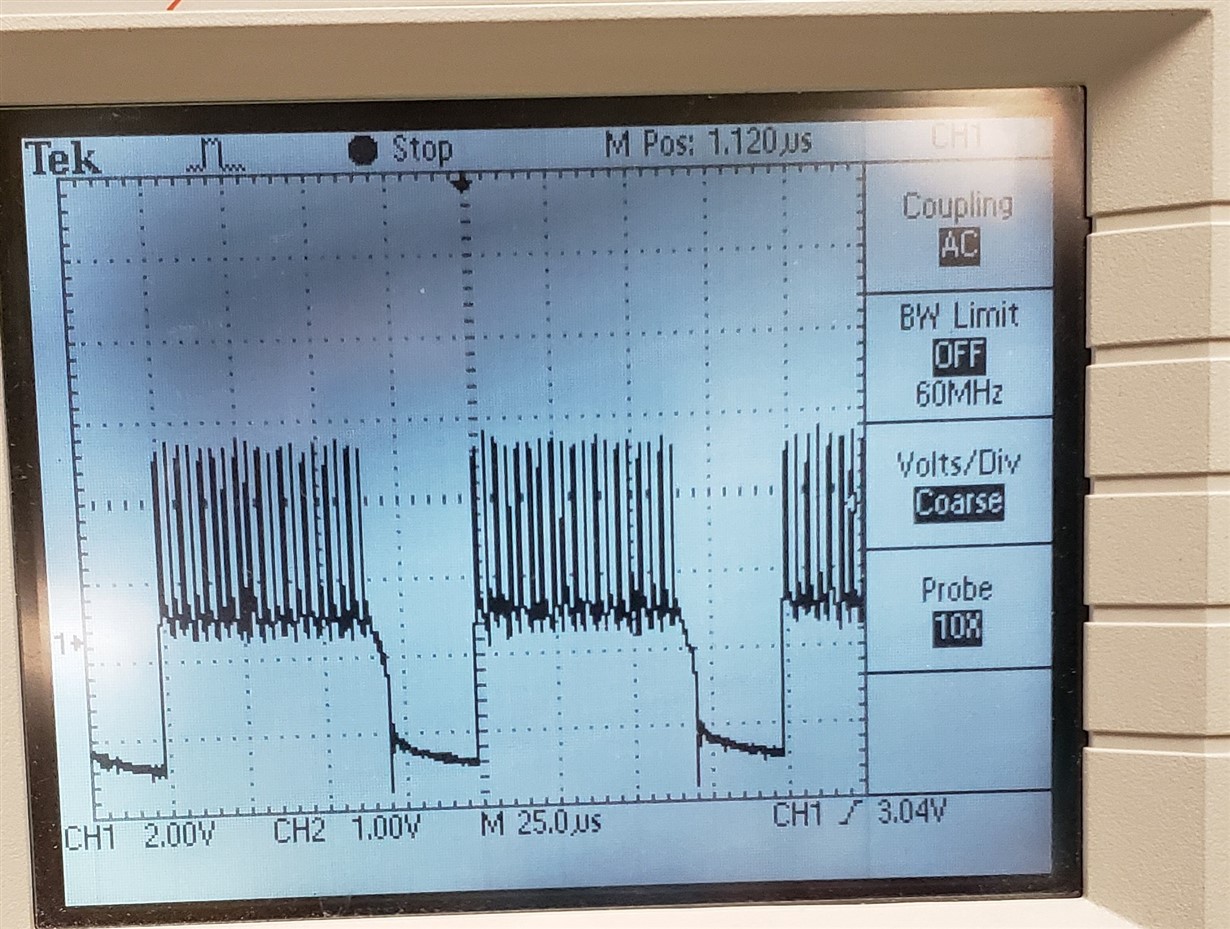Other Parts Discussed in Thread: LM3409
We are using the Eval board in PWM mode to drive a laser diode. I have placed a scope across the output of the eval board to get the shot seen below. The laser diode does lase and it changes brightness with changes in duty cycle. Where my question lies is why are there spikes on the waveform? I would like a clean square wave. And second what is the instantaneous current peak. The laser manufacturer has told us that any currents above 700mA will damage the semiconductor material as well as the coating on the faces. The LM3409 is controlling the laser current to an average of 1A max, but it is not just the average current that is an issue but also the instantaneous. We want to know if there is a way to limit the peak current.
In an attempt to better understand what is happening we inserted a 1 ohm resistor in series with the laser and measured the voltage on either side. The noise was terrible, but using the scope math function we subtracted the two signals and got a smooth triangle wave with a peak of 1V. That would indicate a peak current of 1A. We also placed a snubber across the output of the driver board with various caps and 10 ohm resistors. The output changed but the spikes remained. This tells me the spikes are not noise but are part of how the driver is operating the laser. Any information about what is going on and how to limit the max current (instantaneous) (There is a way to change the average from 1A to 700mA in the datasheet), would be helpful.


